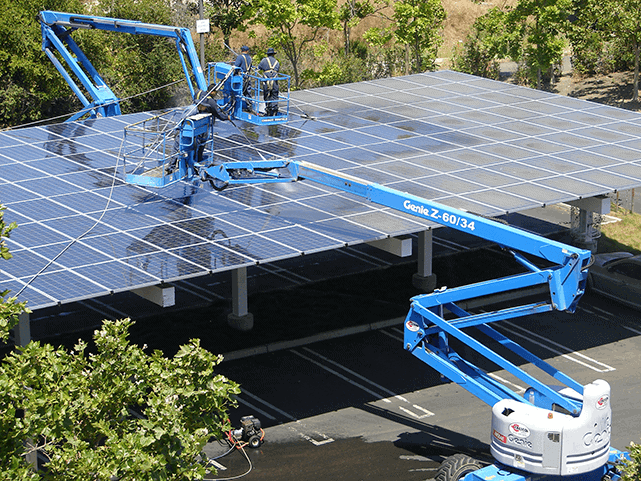Countries that choose to optimize the natural benefits of their renewable energy resources in the 21st century will have a comparative advantage over nations that don’t.
Natural capital leaders will also be defined as those that minimize their ecological liabilities, such as the carbon liability imposed by the use of non-renewable fossil fuels. They will be nations that position their ecological footprint in harmony with the biocapacity of their natural assets and transition away from their historical dependence on non-renewable energy – coal, oil and natural gas.
Who are the world’s top natural capital superpowers? The most recent estimates place Russia, the U.S., China, Canada and Saudi Arabia at the top in terms of the value of their respective natural capital assets (see ranking on previous page). These assets include the value of agricultural lands, forest resources, oil, natural gas, coal and minerals, and they make a significant contribution to the annual GDP of nations. For example, Canada’s natural capital resource industries contributed about 10 per cent to the country’s $1.5 trillion GDP in 2011. The agriculture, forestry and mining sectors (including oil and gas) generated a 4.3 per cent return on the estimated total natural capital asset value of Canada, which is roughly $3.5 trillion.
Missing from such estimates, however, are the carbon liabilities and other ecosystem service losses imposed on the planet. Countries with a higher percentage of their natural capital from oil, coal, gas and bitumen resources are more vulnerable due to higher associated environmental damages such as the social impact of carbon on society. According to the Inclusive Wealth Report 2012, the annual carbon damage costs associated with greenhouse gas emissions from non-renewable energy use vary from $1.36 billion for Canada, to $2.57 billion for China, $22.5 billion for India, $32.8 billion for the U.S., and up to $51.68 billion for Germany. These costs should effectively be deducted from each nation’s GDP figures to account for natural capital depreciation costs.
Also missing from these natural capital estimates is the societal value of renewable or clean energy potential or their opportunities for development. The World Bank has looked into how much solar, wind, hydro, geothermal and biofuels contribute to the natural capital of nations. Monetary estimates of renewable energy capacity and associated infrastructure are not available. Still, it is possible to assess the importance of a nation’s annual renewable energy capacity relative to its current energy demand.
Let’s look, for example, at the world’s Top 10 natural capital superpowers. The U.S. and China, the world’s largest energy consumers, have sufficient renewable energy potential to more than offset or replace their current annual energy demands. Australia, Brazil, Russia and Canada are in an even more favourable position with sizable renewable energy potential far exceeding their current energy demands from conventional sources. Germany is the most vulnerable of the 10. It has insufficient renewable energy potential to offset its current energy demands.
While these results do not suggest perfect substitution of non-renewable for renewable options, they are encouraging. They suggest that the most important natural capital superpowers, in terms of both natural assets and carbon emissions and related carbon damage costs, could begin to transition to a clean energy future that would be less carbon intensive and have lower carbon damage costs.
Moreover, from a natural capital asset accounting basis, these renewable energy assets, properly maintained, would provide a sustained benefit stream and mitigate the vulnerability from declining and more expensive stocks of finite non-renewable sources. Development of these renewable energy options would also contribute to employment in the renewable energy sector. In addition, society would save billions of dollars in foregone carbon damage costs and other ecological service damages that would result from continuing to burn coal, oil and natural gas.
Countries, in other words, that capitalize on their renewable and clean energy potential will clearly enjoy a comparative advantage over nations that don’t, both in terms of economic prosperity and quality of life.
Another natural comparative advantage of nations is their ability to live a good and sustainable life within the natural biocapacity of the land. The following table compares the Ecological Footprints (in hectares per capita) relative to the available biocapacity (hectares per capita) for the Top 10 natural capital superpowers. The last column shows whether the nation enjoys an ecological reserve (surplus) or an ecological deficit. The results show that Canada, Australia, Brazil and Russia all enjoy relatively healthy ecological surpluses; that is, the current household demands on nature’s natural assets is well within the limits of nature’s capacity to provide energy, food and materials for current consumption. The U.S., China, Saudi Arabia, Germany, India and Venezuela all live with an ecological deficit.
Moreover, from a natural capital asset accounting basis, these renewable energy assets, properly maintained, would provide a sustained benefit stream and mitigate the vulnerability from declining and more expensive stocks of finite non-renewable sources. Development of these renewable energy options would also contribute to employment in the renewable energy sector. In addition, society would save billions of dollars in foregone carbon damage costs and other ecological service damages that would result from continuing to burn coal, oil and natural gas. Countries, in other words, that capitalize on their renewable and clean energy potential will clearly enjoy a comparative advantage over nations that don’t, both in terms of economic prosperity and quality of life.





